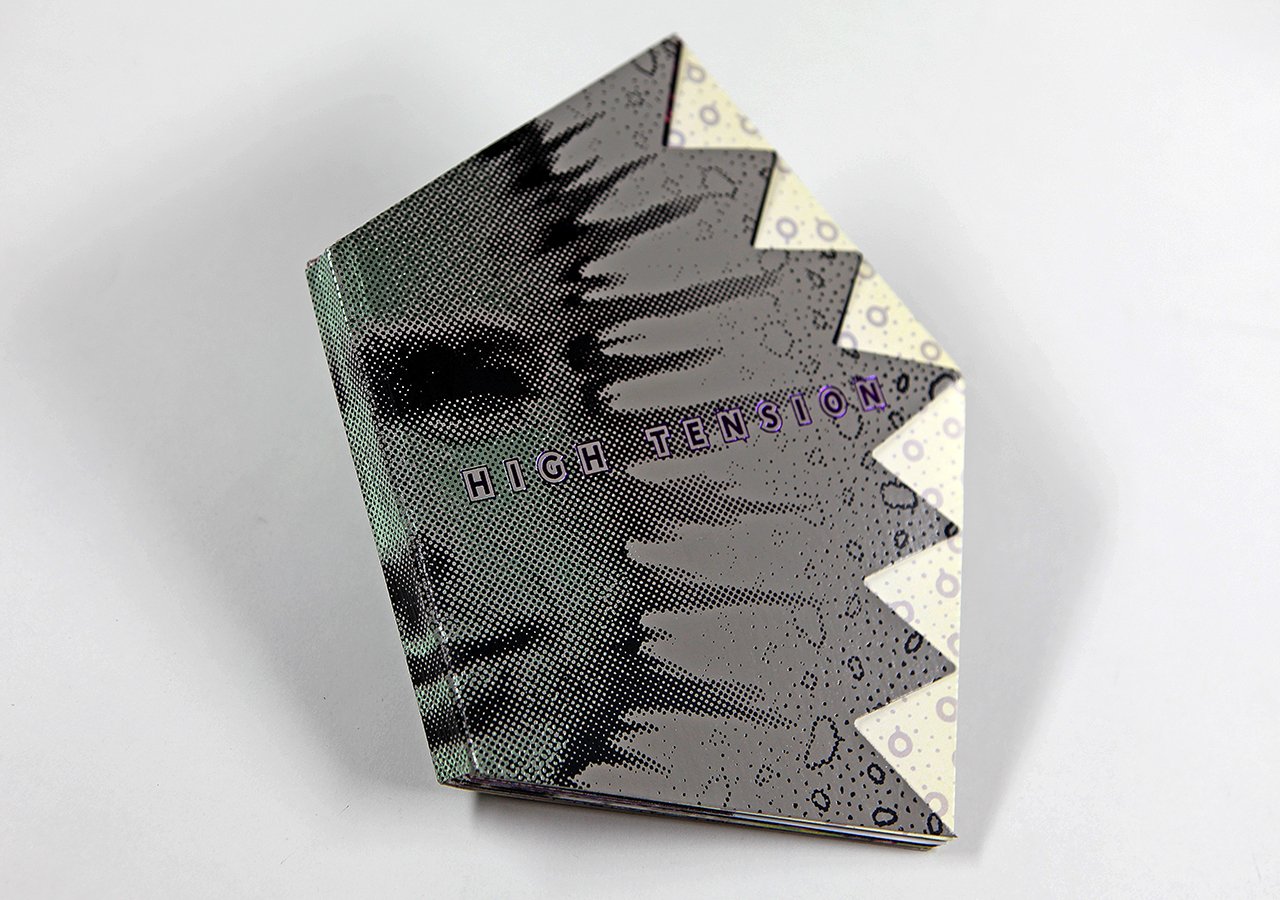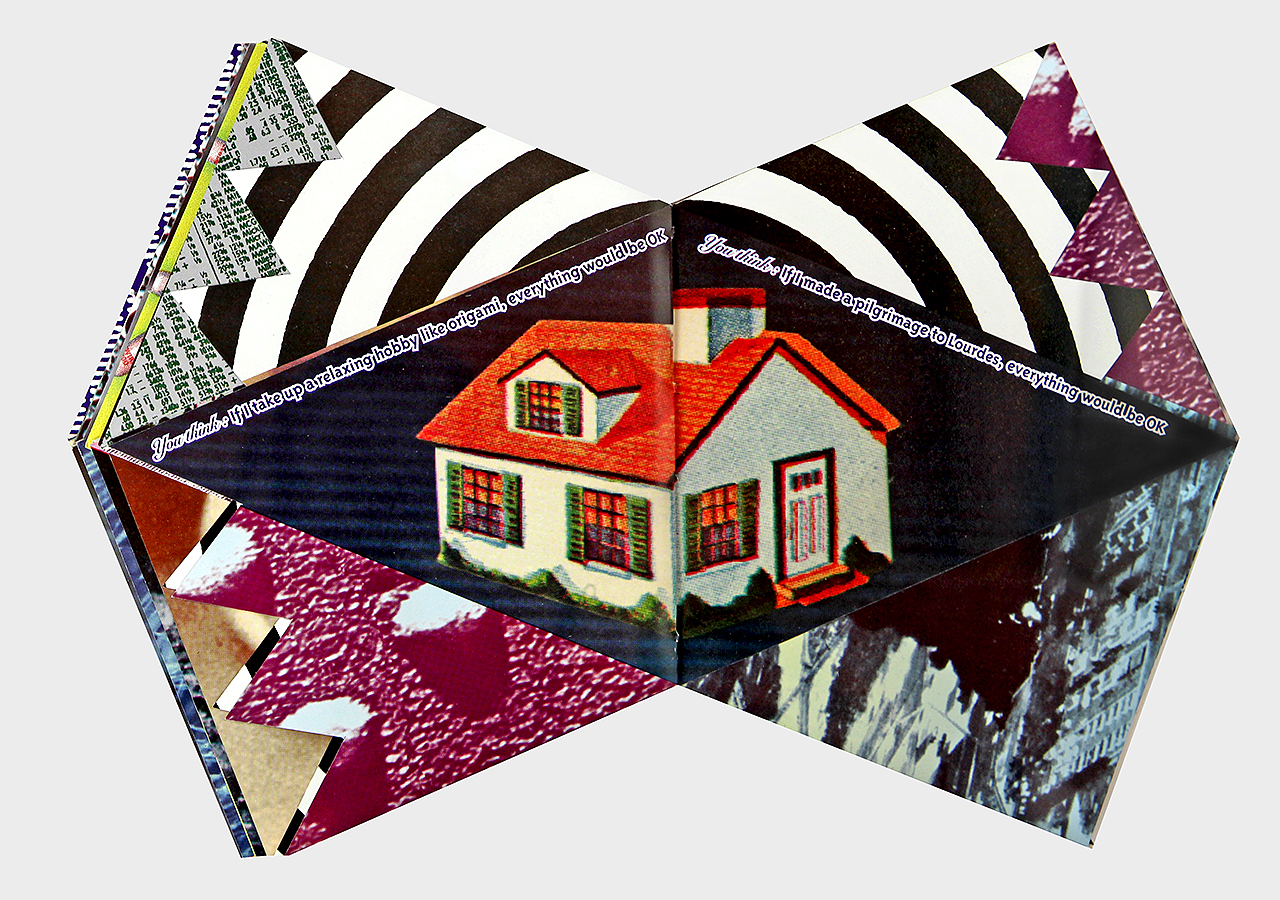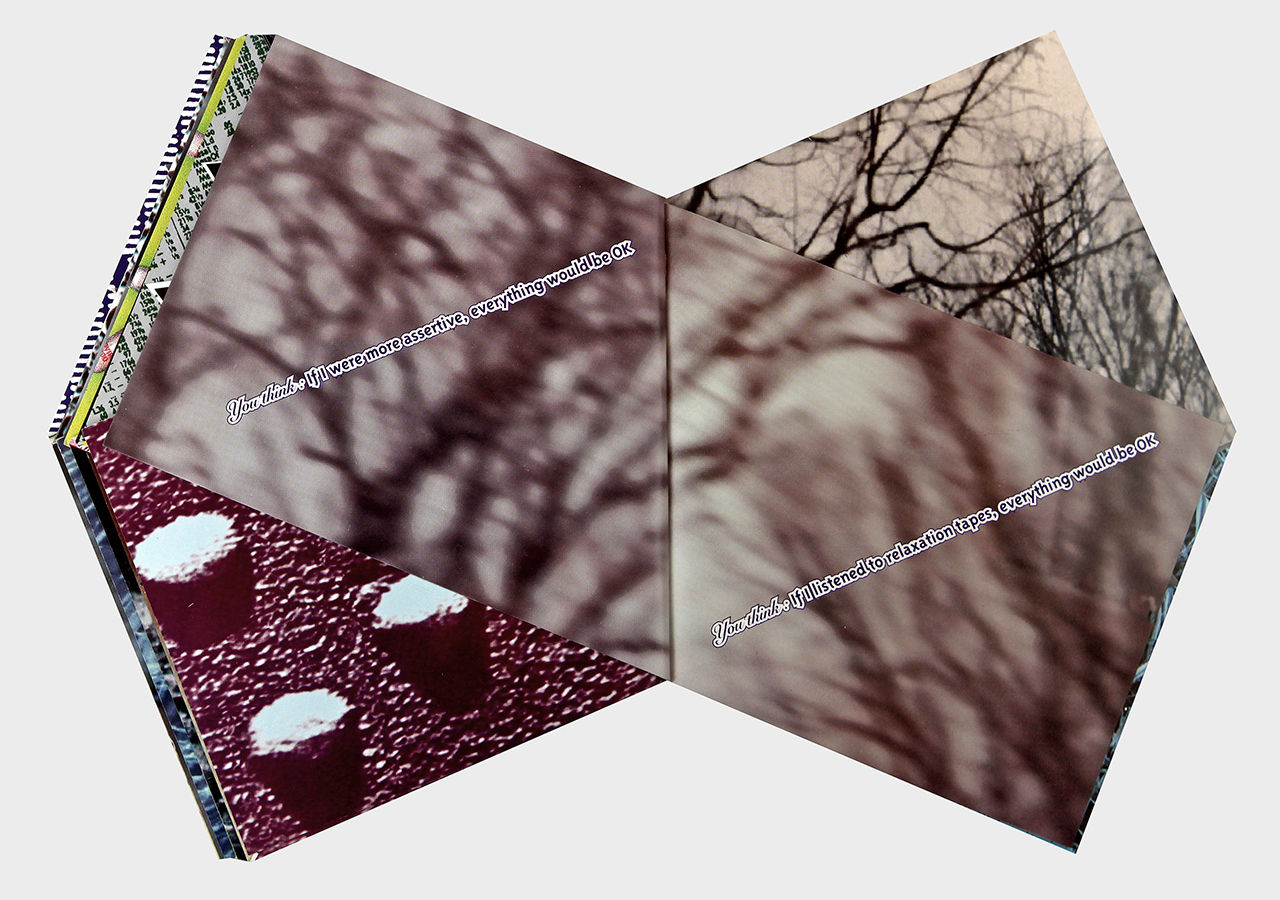HIGH TENSION Philip Zimmermann (1993)
My work is often about personal events or psychological states in my life. In the late eighties and early nineties I felt caught in a very stressful life of juggling a very demanding job (two actually), two small kids, a marriage, plus trying to find time to do creative personal art work, and a million other things. This seems to be a situation that so many artists are living, probably always have been and always will. I am not someone who responds well to stress necessarily, yet seem addicted to it and require it to get stuff done. I knew there were high costs and repercussions so I started to do research on stress on humans. I wanted to create a book that investigated stress and perhaps even looked into ways or relieving it, I hoped in a universal way that many people could relate to. The first dummies had a slightly different shape and had an exploding bomb on the cover; this was eventually changed to my exploding head.
The book goes through a clinical reciting of dozens of symptoms of stress on humans. The second part describes slightly tongue-in-cheek solutions to getting rid of stress in one’s life. I do think I hit a nerve with this book. I don’t know how many times that I have had people come up to me or email me and say that the book perfectly describes their life and that it really spoke to them. I had a psychologist order three copies and she told me that she kept one on a little table in her waiting room!
In 1992, Joan Lyons sent a call out to the artists’ book community that proposals were being sought for a set of artists’ book publications for a huge event that was to take place in Rochester during July of 1993. This event, called Montage ‘93 was to be funded by numerous corporations such as Kodak, Bausch + Lomb, Alling and Corey Paper Co. and the City of Rochester, was going to be a city-wide cultural event that was commissioning new work and “Celebrating The International Festival of the Image”. The timing was good for me and I sent a dummy of the book I had started working on to the jury in the second half of 1992 as I recall. I was lucky to be one of three picked and started working on finishing the book and doing all the prepress work over the winter of 1992-1993. This was the first book that I had ever done that was completely imaged and output on a computer. I used my Macintosh to lay out the pages and then output the film at Purchase College on the AGFA image setter we had there. I did all the film assembly and made the offset plates at my studio at home in Barrytown NY and then took the finished plates up to Rochester in April of 1993 for printing. Pressman Paul Muhle did the presswork this time, on the same Heidelberg KORD press. As I was driving up to Rochester very early that April 19th morning, corssing the Kingston-Rhinecliff Bridge, I remember hearing the news that the Branch Davidian compound in Waco TX was burning and that tanks had been used to flatten buildings there and that David Koresh had been killed. A school bus full of young children had also been burned. It was not a proud moment for the FBI or the ATF, and they tried to cover it up with the help of AG Janet Reno and our slimey senator Chuck Schumer. A funny association to have with the book, but one that sticks in my head.
I was at VSW for two weeks during the printing of High Tension, living in the artists’ apartment there at 31 Prince Street. The book was then packed up and sent out to Publisher’s Bookbindery in Long Island City for the die-cutting and foil stamping and finally the smythe-sewing. As it turned out, the book was sub-contracted to a bindery in western Massachusetts. Every aspect of the job was botched and I lost about a third of the edition of a thousand to mis-registered die cutting, torn pages, badly sewn books and many other problems. High Tension was a very difficult binding job, it is true. There are no right angles to line the signatures up by. However I think that when the bindery realized how difficult a job it was they decided to just slap it out with no care whatsoever rather than lose a lot of money on it. Because of the due date being the opening of Montage ‘93 in July of 1993 I had no choice but swallw the bad binding. If I had time, I would have forced the bindery to reprint the whole book and do the job over again. I had a very precise die-cut master sent with the job that somehow got lost and I later found out that was why the die-cutting was so poor.
The budget for the book was substantial both because of the rather large amount of production money from Montage ‘93 but also because of a Faculty Development award from Purchase. I also contributed some of my own money. Still the money was not enough to do the whole book by full color CMYK process printing. So I decided to try to output everything to three-color CMY separations, which required some special fiddling with Photoshop. That meant no black ink at all is used in the whole book, which few people realize. The entire book was done as three color “process”. This saved one set of plates and one press run for each side of every printing form, but it was much harder to print for the pressman because ink levels really had to be turned way up on the coated paper to get anything close to a black made up of just cyan, magenta and yellow. In retrospect I wish I had just found the money and printed it as normal CMYK sets because the blacks are not as good as normal and are uneven.
One additional innovative production feature of the cover was that I made a duotone foil stamp, which as far as I know is the first time that had been done other than the cover I had done for an earlier book Interference published by Nexus Press.
The edition has been essentially out-of-print since 1996, with only a very few recently found copies left. $150 from here. Not all page spreads are shown at right.



























